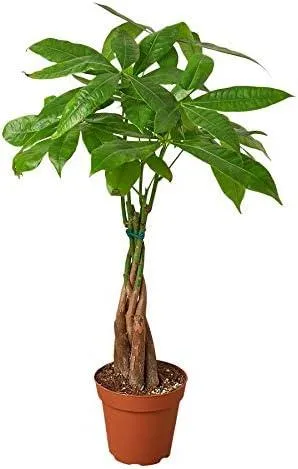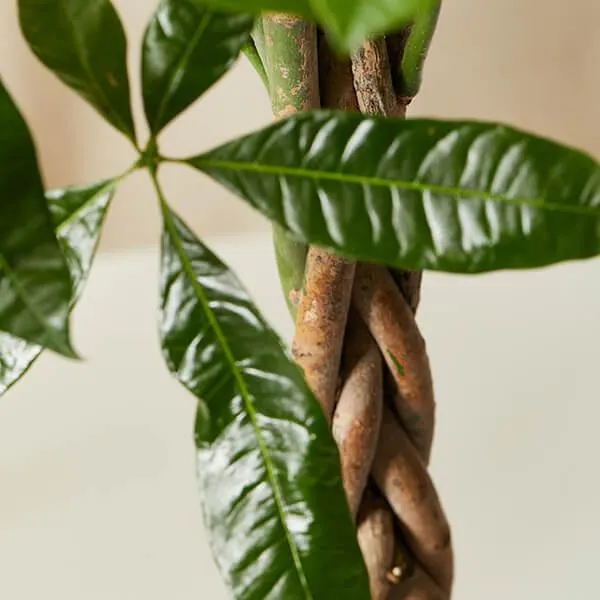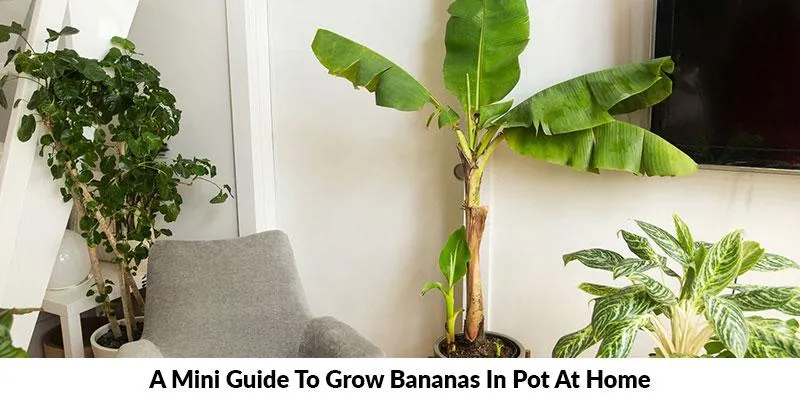The Best Indoor Trees to Brighten Up Your Home
If you want to add a splash of greenery to your indoor spaces but worry about caring for plants, fear not – there are several tree varieties well-suited for life inside. In this article, we’ll explore some top options for indoor trees along with tips for care so you can pick the perfect plant to perk up your pad.
User Intention #1: Which Tree Varieties Thrive Indoors?
- Chinese Evergreen (Aglaonema) – This tropical beauty is one of the toughest indoor trees. Its broad, waxy leaves come in various colors like green, variegated, or red. Chinese evergreens prefer medium to low indirect light. I’ve had one thriving in my home for over 5 years with minimal care.
- Ponytail Palm (Beaucarnea recurvata) – Native to Mexico, this attractive succulent tree has stiff, upright foliage that looks like tails streaming from the top. Ponytail palms are very low maintenance and can go weeks without water. They do well in bright, indirect light.
- Dwarf Date Palm (Phoenix roebelenii) – With its slow growth and tolerance of varying conditions, this miniature palm makes an excellent choice for indoor trees. It enjoys medium to bright indirect sun and regular watering. I keep one on my kitchen counter for an exotic tropical touch.
User Intention #2: What Growing Conditions Do Indoor Trees Prefer?
Most trees suitable for indoor growing thrive in medium to bright indirect sunlight – meaning light that filters through a window versus directly hitting the plant. Exceptions may tolerate low light. As for water, check soil moisture frequently and water when the top inch becomes dry. Use lukewarm water and ensure good drainage by not letting the plant sit in a saucer of pooled water.
As for soil, aim for well-draining potting mixes without fertilizer which could burn delicate tree roots. From experience, I’ve found basic cactus/succulent soils or tropical mixes work well. Re-pot young trees annually in spring once new growth emerges using a container just 1-2 inches larger to allow adequate root expansion.
Temperature-wise, indoor trees generally prefer warmth – keep away from drafty windows, vents or areas near doors that see fluctuations. Maintain room temperatures between 65-80 degrees Fahrenheit. Humidity levels around 50% suit most varieties. Use a pebble tray or humidifier if air feels dry.
User Intention #3: What Kind of ongoing Care Do Indoor Trees Need?
Most indoor trees are pretty low maintenance once established with their preferred growing conditions. Here are some basic care tips:
– Water when top 1 inch of soil becomes dry to the touch rather than on a schedule. Under-watering is safer than over-watering for trees.
– Check soil pH levels annually in spring – many varieties like slightly acidic conditions around 6-6.5. Amend if needed using products like peat moss or pine bark.

– Dust foliage periodically using a soft cloth or duster to remove dirt buildup. Wipe leaves with a damp cloth only if really soiled.
– Fertilize only during active growth periods in spring and summer using a diluted balanced houseplant formula every 4-6 weeks. Flush container with plain water between fertilizations.
– Prune off any dead, diseased, or misshaped growth as needed using clean, sharp pruners. Sanitize tools between trees.
– Repot yearly in spring into a container just 1-2 inches larger to allow roots room to grow without being rootbound.
With the occasional TLC, indoor trees can thrive for years inside your home! Patience and paying attention to their preferences will help yield success.
User Intention #4: What Common Problems Might Indoor Trees Face?
The top complaints trees face when grown indoors involve problems stemming from improper care conditions. Here are some issues homeowners commonly report alongside prevention tips:
- Leaf Drop or Wilting: This is usually due to over-watering which can cause root rot, a prolific pathogen. Check soil moisture frequently and allow drying between waterings.
- Slow Growth or Stunting: Low light levels commonly cause this. Re-locate trees to a spot offering at least 4 hours of indirect sunlight daily. Repotting young trees also boosts vigor.
- Pests like Mealybugs or Scale: Check foliage regularly and wipe down with isopropyl alcohol if spots appear. Pests thrive when trees are stressed; ensure ideal care conditions to deter infestations.
- Leaf Discoloration: Issues like brown tips could mean too much or too little fertilizer; follow dilution doses carefully. Yellowing leaves may need more light or indicate over-watering.
early identification and addressing underlying problems lets you nurse your indoor tree back to health. Don’t hesitate to separate diseased plants too. With some TLC, trees usually bounce back fast indoors.

User Intention #5: How Can Indoor Trees Benefit Health and Well-being?
Beyond adding greenery beauty to living spaces, research shows indoor trees present surprising wellness upsides too. As someone who’s noticed effects firsthand working from home, here are some key indoor tree perks:
– Their presence combats stress. Simply gazing at greenery calms nerves and lowers cortisol/blood pressure. Leafy views have proven stress-reducing power equal to $5,000 annual raises!
– Improved air quality results from indoor trees natural ability to remove toxins like formaldehyde/molds from circulated air. Many can sanitize up to 87% of airborne pollutants in 24 hours – amazing!
– Enhanced productivity may occur due to stress relief and calming aesthetics. Studies link indoor trees to 15.5% higher levels of attentiveness and 25% greater memory retention among students/workers.
– Increased sense of well-being could happen because small interior plants stimulate positivity/joy we may lack cooped indoors. Their presence alone raises happiness levels – try it for yourself!
So in summary, including indoor trees offers much more than fashionable décor. Their proven psychological/physiological benefits help combat modern woes from disease to mental/physical stress. No wonder experts recommend houseplants!
In closing, by choosing trees tailored to indoor conditions and care, anyone can enjoy livening up living spaces with attractive greenery sure to boost vibrancy long-term. With some TLC, trees remain low fuss companions granting visible beauty along hidden health upgrades. I hope these insights help you select the perfect plant to perk up your pad indoors!

Indoor Tree Species and Care Requirements
| Tree Species | Light Requirements | Water Requirements | Humidity | Growth Rate |
|---|---|---|---|---|
| Spider plant | Low to medium light | Let dry between waterings | Tolerates low humidity | Moderate |
| Chinese evergreen | Medium light | Water when top inch of soil is dry | Prefers humidity over 50% | Slow |
| Ponytail palm | Low light | Let dry slightly between waterings | Tolerates low humidity | Moderate |
| Snake plant | Low light | Let dry completely between waterings | Tolerates very low humidity | Slow |
| ZZ plant | Low light | Let dry completely between waterings | Tolerates very low humidity | Slow |
FAQ
-
Which trees can thrive indoors?
Trees like the money tree and bamboo palm do great in indoor living areas. They don’t need a ton of sun and don’t mind average indoor temperatures.
-
Do all indoor trees need a lot of sunlight?
Not really. Some trees sort of tolerate low light conditions inside the home. For example, the snake plant and pothos vine can survive with just a few hours of indirect light each day.
-
Is it hard to care for indoor trees?
Taking care of indoor trees isn’t too difficult as long as you water them regularly and make sure they get enough light. The harder part is finding trees that actually want to live inside year-round. Fortunately there are many great options that do well in the home.
-
Do trees clean the air inside?
Yep, some houseplants like peace lilies and english ivy are super effective at removing toxins from indoor air. They’re basically little air filters that can help you breathe easier, especially if you have allergies. Just one or two plants in a room can make a difference apparently.
-
How often should indoor trees be watered?
Most indoor trees need watering about once a week, but the schedule depends on the species and growing conditions. Additionally, you’ll want to check the soil frequently – if the top inch is dry, it’s time to water. Overwatering is more common than underwatering for indoor plants.
-
Can indoor trees be moved outside in summer?
Perhaps. Some trees may enjoy warming up outdoors for the summer, but you’ll need to take it slow. Gradually introduce them to more sunlight to avoid burns. Also check that nighttime temps don’t dip too low. It takes some getting used to for formerly indoor plants.
-
What’s the easiest indoor tree to care for?”
A lot of folks say the snake plant is the easiest because it’s basically impossible to totally kill. It tolerates very low light and infrequent watering. The lucky bamboo is also pretty foolproof since it grows partially in water. Neither require a green thumb to keep happy indoors.

At the same time, spider plants aren’t too shabby either. They basically thrive on neglect! Despite being low maintenance, indoor trees can add amazing life and personality to a home. It’s amazing how much a few potted plants can boost your mood and air quality. Nevertheless, no matter which tree you choose, just remember to water regularly – that’s key to keeping any houseplant happy and healthy indoors.
